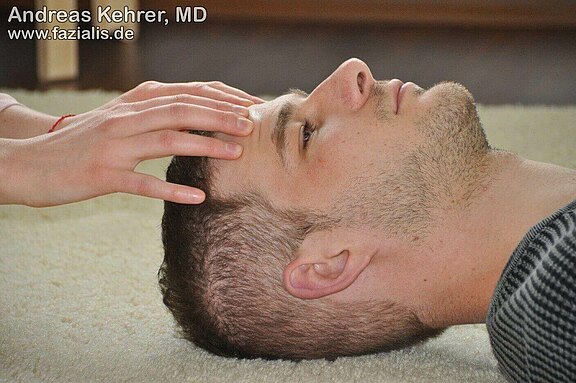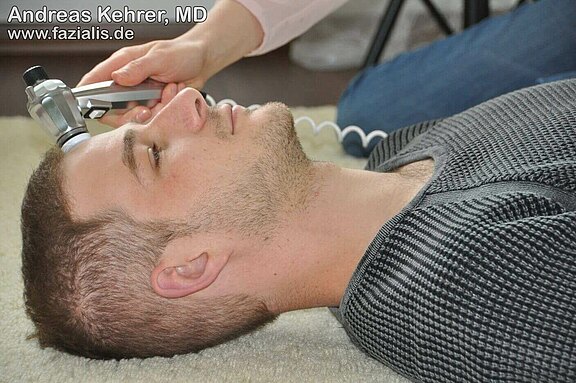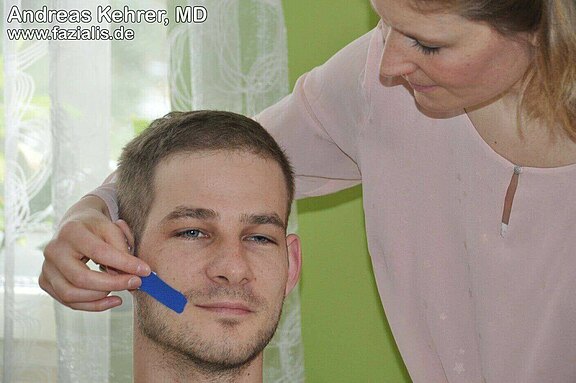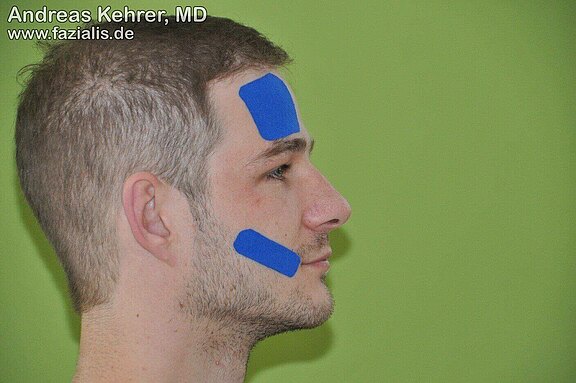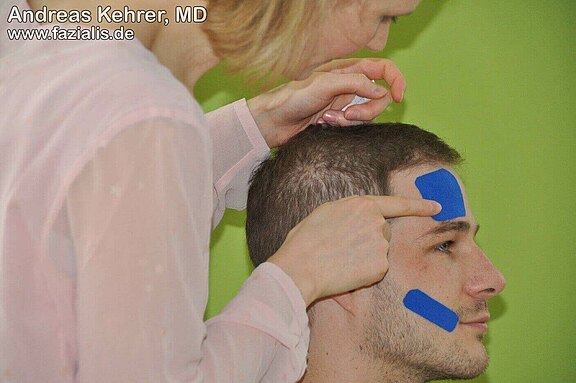I. Possible consequences of facial nerve palsy from a logopedic point of view
- Missing activation of the one-sided mimetic muscles (e.g. hanging corner of the mouth, missing frown, missing lip closure). From the patient's point of view, any mimetic movement reveals the one-sided handicap (e.g. the smile).
- Impairment of precise articulation: depending on the severity of the paralysis of the corner of the mouth and the lips, articulation can be particularly unclear and difficult to understand, especially on the telephone.
- Swallowing disorders: If meals cannot be processed due to reduced sensitivity, numbness in the lips, tongue, cheeks, palate, and a malfunction in the transport of food, a swallowing disorder of varying severity often occurs.
- Saliva and fluid leakage: Often due to unilateral drooping mouth angle, the leakage of saliva or fluid during drinking cannot be adequately controlled.
- Impairment of taste
II. Speech therapy diagnostics
Using various classification scores, such as the Sunnybrook Facial Grading System, the severity of the impairment of the mimetic musculature by facial paralysis can be classified. Precise observations of different mimetic movements should provide information about the deviation of the affected half of the face in comparison to the healthy side. In addition, the observation scales will be used to evaluate the degree of co-contracture of other mimetic muscles. This procedure helps to assess the extent of facial restrictions and highlights progress more clearly in the course of the therapy.
III. The logopedic objective
The logopedic objective - depending on the patient's severity and subsequent difficulties - is to reactivate the nerve and thus support the normalization of the mimetic musculature in order to improve the patient's swallowing and speaking. The targeted control of the nerve by means of a specific exercise program is intended to prevent long-term atrophy of the muscles. Regular therapy units (especially in the acute phase) and the patient's perseverance in the implementation of the exercises at home are the basis for success!
IV. Measures in logopedic exercise treatment
The following measures can be taken as part of logopedic therapy:
PNF (Proprioceptive Neuromuscular Facilitation) according to Kabath: Method (1945-1951 developed in the USA) for facilitating the interaction of muscles and nerves by adequate stimulation of the receptors of deep sensitivity (proprioceptors). With regard to facial nerve palsy, the treatment of facial muscles stimulates the skin receptors in particular.
Orofacial regulation therapy according to Castillo Morales
V. Perspective
In a study conducted by Nicastri et. al. in 2013, the benefit of early exercise treatment (in the acute stage) could be highlighted: it resulted in a significantly positive effect on the severity and duration of the regression of paresis.[1]
However, the effect of the exercise treatment should not be underestimated if it is resumed in the already chronic condition of facial nerve palsy: Pereira et. al. were able to demonstrate a significant benefit for the patients in a 2011 study through the exercise treatment.[2]
Sources:
[1] However, a study published in 2013 provides further evidence for the benefit of early physiotherapy in severe facial nerve palsy: it showed a significant positive effect on the severity and duration of recovery. In this study, however, the number of cases was small with a total of 87 patients (Nicastri et al., 2013).
[2] Only one study (n=50) could be evaluated in the meta-analysis for the therapy of chronic facial nerve palsy (lasting longer than 9 months) with exercise treatment. A significant benefit was shown for this patient group (Pereira et al., 2011).
